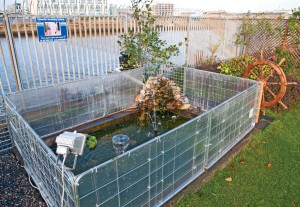
The recent water supply issues affecting Dublin seem to most people to be both disgraceful and painfully ironic, given that Ireland is world-renowned as one of the rainiest places to live in Western Europe. The long, hot summer of 2013 has diminished reservoirs across the country, and replenishing the supplies has introduced novel problems for filtrations and purification.
The disruption to water supplies this October and November echoed similar, considerably more critical shortages in Galway in 2007. A water filtration plant in Terryland – which supplied 30% of the region’s running water – was identified as the source for an outbreak of intestinal parasites. A notice was issued, advising people to boil all tap water before consuming or washing, which stayed in effect for the length of that summer. At the time, publications such as Business and Finance characterised Dublin as being one heat wave away from a serious water shortage, and this year was the year.
Fortunately, a new era of eco-technologies is underway. NewsFour spoke with Denis Sheehy of the Clare-based Cloudbrook Water Company which specialises in supplying and constructing on-site infrastructure for rainwater capture and purification, servicing domestic, business or agricultural needs. Denis explained that the basis of what would become the company came from his professional background as an architect. “I was very conscious that retro-fitting a rain harvesting system on a house would cost around €10,000, and that would only provide water for the toilets. So we got thinking, how can we do this so that 100% of the water that falls on a roof provides 100% of the water of the household, including the drinking water.
Rainwater harvesting is one response to the on-going infrastructural challenges, and the rising cost of running a home. The forthcoming water charges, which were formally declared in July this year, to be implemented by the end of 2014, are regarded as a necessary evil at best, and at worst as yet another tax-based imposition on struggling households.
However, when this is mentioned to Denis of Cloudbrook Water Company, he raises a few complicating factors. “The situation here in Ireland is that we have the same type of filtration as the UK but worse infrastructure. In Dublin, the average cost of 1,000 litres is €2.50, in parts of the Midlands, it’s as much as €2.89. With rain harvesting, you can get the cost down to 90 cent per 1,000 litres, because rain water is easier to filter and purify than ground water extracted from aquifers.”
He also points out that whatever rate the water charges start at, they will inevitably rise. He quotes from memory the European average cost of water for a household as being €620 to €680 per year.
The old adage that there are no political solutions, only technological ones haunts the edge of this controversy. The bacterial contamination in Galway was eventually guaranteed against happening again through the opening of an ultra-violet treatment facility, where water stores are sterilised through the use of high-frequency light emissions, an industrial-scale version of simpler methods used by relief agencies in the third world.
With the imminent water charges contributing to a dire sense of the rising cost of getting by, the possibility of partially detaching your house from the dependence on State infrastructure can appear increasingly tempting. Affordability is an issue, of course: the tech doesn’t supply or install itself.
How the State might incentivise mass adoption is still an under-addressed question – there is a Code for Sustainable Homes, which has arguably been neglected and underdeveloped since the bailouts created a governmental need for more taxation. As with many matters of urgent public concern these days, the initiative must be taken by the people.
Above: Rainwater harvesting system at RICC.
Photo by Leeza Kane.
By Rúairí Conneely

